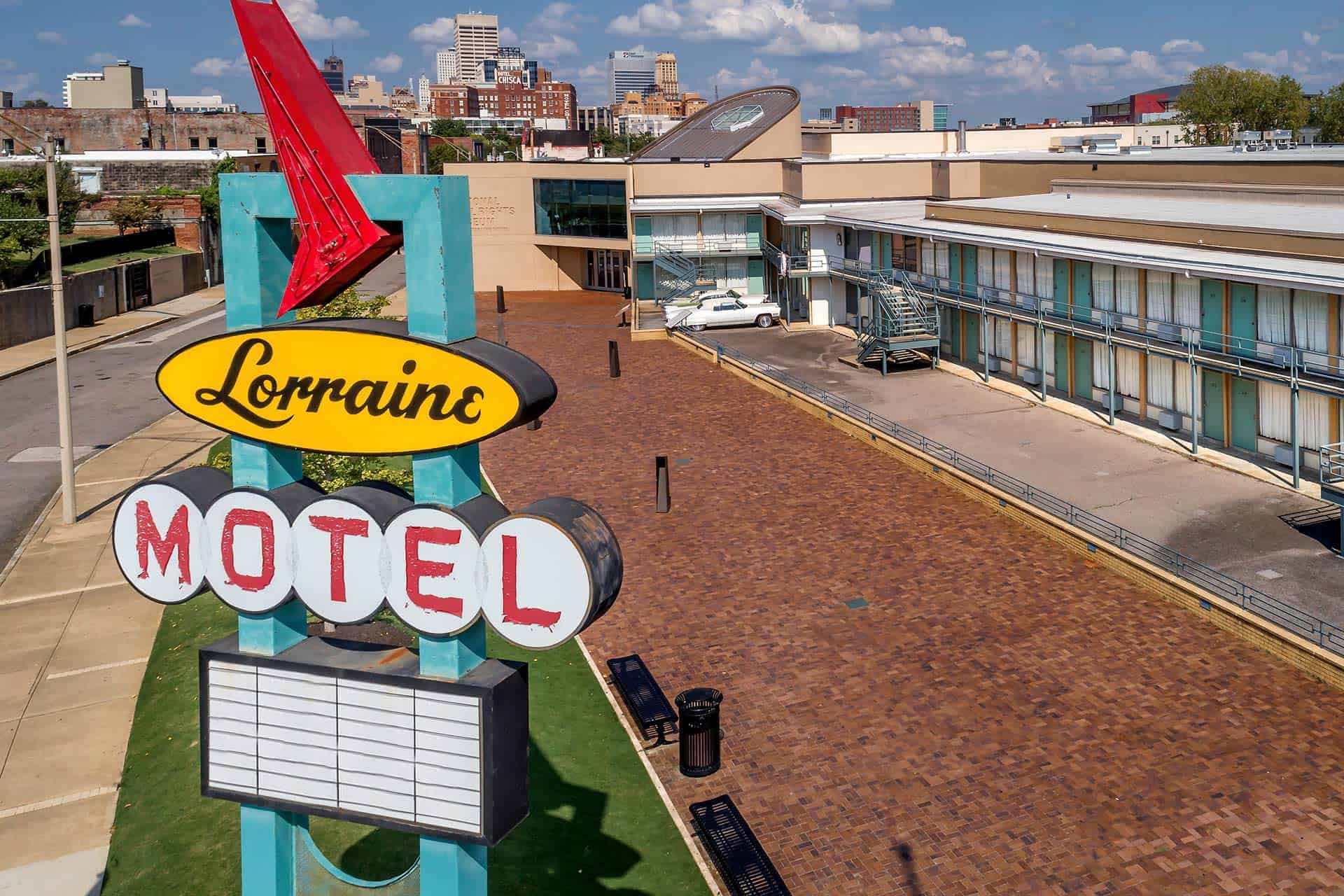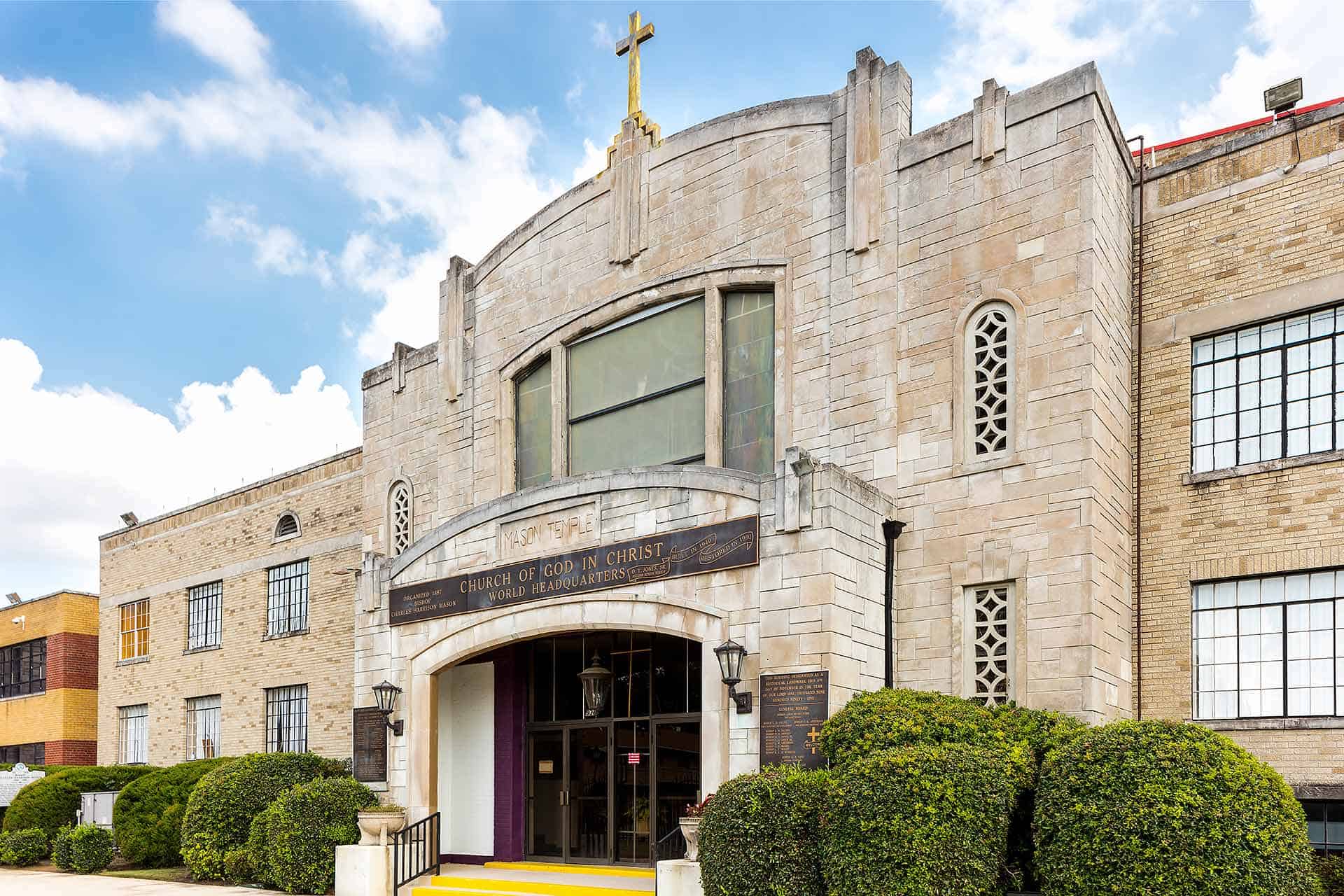Clayborn Temple
Clayborn Temple’s decades-long ties to the Civil Rights Movement reached a pinnacle in 1968 when this stately building became headquarters for the Memphis sanitation workers’ strike. The strike began when two African American sanitation workers were killed in an accident on a city truck. Support quickly came from local and national clergy, labor leaders, high school and college students, and civil rights activists from across the country. The African Methodist Episcopal congregation’s tradition of civil rights advocacy made the church a natural assembly point.
Starting in February 1968, nearly 1,000 sanitation workers marched twice daily from the church to City Hall carrying signs declaring “I AM A MAN.” In the evenings, hundreds of strikers, their families and supporters filled the sanctuary for inspirational speeches. The announcement of Dr. Martin Luther King Jr.’s support gave the strike national prominence. Arriving in Memphis to lead a march planned for April 5, Dr. King was assassinated at the Lorraine Motel on April 4, 1968. On April 16, the sanitation workers gathered at Clayborn Temple and accepted terms, which ended the strike.
I AM A MAN Plaza
Adjacent to the Clayborn Temple, the I AM A MAN Plaza is where Memphis sanitation workers gathered during their pivotal 1968 strike in protest of working conditions. On the plaza, a large, experiential sculpture pays tribute to the strikers and the legacy of Dr. Martin Luther King Jr. The plaza also features a wall engraved with the names of those who participated in the strike. A focal point of the Civil Rights Movement, the strike brought Dr. King to Memphis and, tragically, to his assassination. The campaign and its “I AM A MAN!” slogan came to represent the struggle of the working poor and racial inequality in Memphis and beyond. The plaza, with its bold sculpture, commemorative markers and proximity to Clayborn Temple, offers visitors an opportunity to learn about and meditate on the continuing impact of the Civil Rights Movement.
NOTICE: The Clayborn Temple was tragically burned in a fire on April 28, 2025. We do not have any information at this time regarding plans for its restoration. Please contact www.clayborn.org/connect/ for further information.











